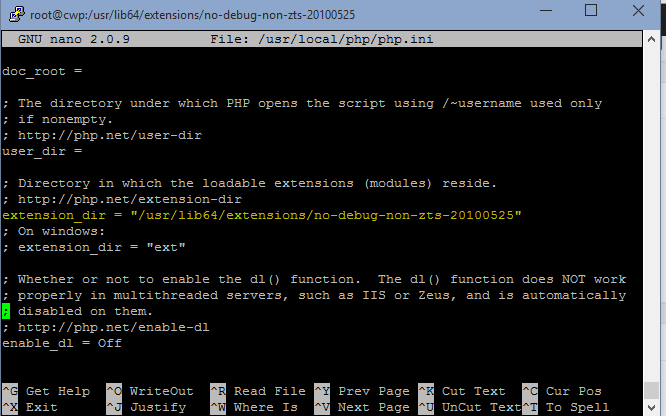In this tutorial we will show you how to install ffmpeg on CentOs Web Panel. Before we proceed ahead we need to make few changed in php.in file as php entention directory is not defined in it. Also we need to create directory manually. Lets proceed.
1) Login to SSH (Using Putty)
2) Make Extension Directory.
mkdir /usr/lib64/extensions/
mkdir /usr/lib64/extensions/no-debug-non-zts-20100525
3) Edit PHP.INI file.
nano /usr/local/php/php.ini
4) Now uncomment ;extension_dir = "./" and replace it with extension_dir = "/usr/lib64/extensions/no-debug-non-zts-20100525" and save the file (ctrl+o and crtl+x).

5) Reboot Apache
service httpd restart
Now we are ready to proceed with the installation.
6) Login to CentOS Web Panel (http://your-ip:2030)
7) Navigate to PHP Settings --> FFMPEG Installer and click Start Installer in Background


8) You can track its process by using (tail -f /var/log/ffmpeg-installer.log) in SSH.

9) Check if ffmpeg-php is enabled in php. Navigate to PHP Settings --> PHP Info and look for ffmpeg.

Great you have install ffmpeg-php to work with your php application.
* NOTE: If you have already installed ffmpeg without following Steps 2,3,4,5 your ffmpeg-php installation will break. Please follow steps below to complete installation.
A) Complete steps 2,3,4,5
B) Open SSH (Using putty)
C) Navigate to ffmpeg-php folder.
cd /usr/src/ffmpeg-php/trunk
D) Now run the installation.
phpize
./configure
make && make install
E) Once installation is over you will see the screen below

F) Proceed to the step 9 to verify if ffmpeg-php is enabled in PHP

 English
English